In many parts of the world February is the depth of winter, the coldest, snowiest, most miserable month of the season. But from Georgia south, it’s fruiting time for the Silverthorn.
Last week in Sarasota we rummage through a hedge of Silvethorn and found a few fruit pretending to be ripe. Most of them were still bitterly tart but some were almost ripe, a hint of sweet things to come. It was originally planted as an ornamental from the Carolinas south and west. Birds, who know food when they see it, have helped to naturalized throughout the South the easy-to-identify shrub. The distinctive fruit reportedly has the highest amount by percentage of the antioxidant lycopene. The slightly bitter, edible seed has omega-3 fatty acids. To read more about the Silverthorn go here.
A local church a few hundred feet from my house has a raised educational garden for their students. It has many of the expected plants, tomatoes for example. However lower 30s later this week might kill them off but the cabbage will do just fine. They are also raising cotton, my first up close look at the plant. Of course, what I am more interested in is the garden weeds. They have a fine crop of amaranth, henbit and bitter cress. All three grow readily here in the winter though henbit is the only cool-season annual. Amaranth is a spinach substitute, and bitter cress is a peppery little mustard. Henbit, however, is unlike the other two. It is not spicy nor is it used like spinach. It’s a mild green on the sweet side and was a welcomed taste to native foragers. Henbit is commonly used in salads but gentle ones of mild flavors.
Botany Builder #34: Pruinose. The word reminds us of “prunes” and it does refer to a characteristic of plums and blueberries. Each can have a white dusting or coating that rubs off easily. Pruinose (PROO-eh-nos) is from the Dead Latin pruina meaning a hoar frost. What hoar frost is … is a bit vague. The “hoar” part is old English for old, so think old frost which was meant to mean plants covered with frost that look old as in white hair. Hoar frost is that coating found on your lawn the morning after a cold, clear, windless night. On plants pruinose is a white coating, sometimes called a bloom. If you rub the bloom off a blueberry it is often black underneath. Our local Chickasaw plums have a nice light bloom.
This week’s guest writer — and next — is Dwayne Allday from Alabama. Like many readers of this newsletter Dewayne had an interest in foraging but over the years didn’t have a chance to pursue like he wanted. Here in two parts is his journey into foraging, and then a surprising interest in something he always avoided, mushrooms.
To Shroom Or Not to Shroom, That is the Question
by Dewayne Allday
If you think mushrooms can talk or get up and walk, there’s a strong chance you need to expand your foraging knowledge beyond the Psilocybin group of mushrooms that grow on moonlit nights in cow patties. I must admit, I was not interested in mushrooms at all for most of my life; not on my pizza and especially not in the wild. I was a very picky eater as a child. As for my knowledge of edible wild plants, it was limited not far beyond those in my area that also showed up in the glossy color pictures in the back of a U.S. Army Survival Manual. I purchased the manual using an entire month’s allowance of five dollars at an Army surplus store in Jackson, Alabama. This happened around the age of fourteen after I finally got tired of borrowing the one that belonged to my best friend. It was my best option to learn about the outdoors after the local Boy Scout group failed to get off the ground when no adults would lead it. That meant that I would create my own patrol and make up my own rules, start my own fires, snare or shoot my own squirrels and cook various animals and birds during those years. It also meant there was no rule against sleeping with a machete and a .22 rifle in the tent. The Army Survival Manual became my unrestricted Boy Scout Manual.
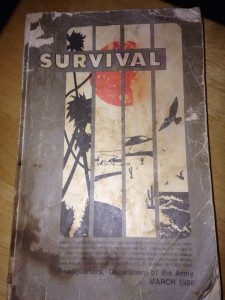 I read through that book cover to cover on many occasions during those years and tried out many of the things discussed. But, the chapter that seemed to draw my most attention was the edible and poisonous plants. Something about living off the land seemed to have a hypnotizing effect on me, but mushrooms at that time were not even in the equation. Not only were they not in my survival manual, but I did not like them and was even a little afraid of them. That’s probably a good thing, too, because I was just a kid and didn’t have a foraging expert to ensure I had the right edible plants, much less the right edible mushroom; the difference being there are far fewer plants that will kill you or make you sick than there are mushrooms. I’ll even go so far as to say that mushrooms must be the black sheep of the foraging family world even though they have gained more popularity in the last few years. Consider that most, if not all plants seem to have been discovered and named by botanists, but not mushrooms. A good analogy of this revelation would be all the dates you went out with but can’t remember their names, except that many the mushrooms weren’t even worthy of a name to begin with.
I read through that book cover to cover on many occasions during those years and tried out many of the things discussed. But, the chapter that seemed to draw my most attention was the edible and poisonous plants. Something about living off the land seemed to have a hypnotizing effect on me, but mushrooms at that time were not even in the equation. Not only were they not in my survival manual, but I did not like them and was even a little afraid of them. That’s probably a good thing, too, because I was just a kid and didn’t have a foraging expert to ensure I had the right edible plants, much less the right edible mushroom; the difference being there are far fewer plants that will kill you or make you sick than there are mushrooms. I’ll even go so far as to say that mushrooms must be the black sheep of the foraging family world even though they have gained more popularity in the last few years. Consider that most, if not all plants seem to have been discovered and named by botanists, but not mushrooms. A good analogy of this revelation would be all the dates you went out with but can’t remember their names, except that many the mushrooms weren’t even worthy of a name to begin with.
That being said, I missed so much, as both a teenager and young man in both the plant and the mushroom kingdom because my field guide was limited and there wasn’t a single plant or mushroom expert in my area. It was pre-internet age and I didn’t know a single person interested in my new hobby either. It was a lonely hobby, being interested in edible plants. It was one of those hobbies that when you mention it to someone, they look at you funny and you wonder what they are thinking. Even well into adulthood, I could not find anyone interested in foraging. Granted I splurged on every book on edible wild plants I could find, but something was still missing, and not having it was increasing my learning curve. I knew a lot, but I could have learned much faster had I studied with experts in the field. Over the years I built up my collection of reference books on edible wild plants, but I still was missing something very important: community. It was around two or three years ago when I found Green Deane on the internet with his EatTheWeeds YouTube videos and later his internet foraging community forum at https://www.eattheweeds.com.
It was around that time when I realized there were other people out there like me and it re-invigorated my desire to expand my knowledge and experience well beyond where I was at the time. Not only was Deane tirelessly pumping out newsletters left and right, he was building a collection of like-minded souls wanting to learn. Deane did something else for me: He was big enough to realize that there were people like me all over the country who wanted to grow in the study of edible wild plants. He took the time to build a reference page on his website with a list of foraging experts state by state and some foreign countries. I’d been searching for a foraging expert within driving distance for years without success yet on Deane’s website I found the Southern Herbalist, Darryl Patton who had apprenticed under the famous mountain herbalist Tommy Bass. Yes, I was pushing 40 before I even met an expert of foraging and medicinal wild plants. Since that time I’ve steadily been learning with the help of Green Deane’s videos, website and community forum in combination with Patton’s classes here in Alabama. It would have taken me many more years of self-education to attain the hands on knowledge I’ve acquired in just the last couple of years with their help.
This brought me to mushrooms. The widely respected author David Arora knew what he was talking about when he titled his book “Mushrooms Demystified” because mushrooms certainly have had their share of mystery, myths and misunderstandings through the years. It’s worth sorting through all of this mystery however, because chasing down and eating wild mushrooms can be both a worthwhile and enjoyable adventure, albeit a slow-learning adventure. Don’t let that stop you though. All I’m saying is that you can’t take them for granted and unless you’re a genius with eyes like an eagle and an obsessive-compulsive disorder micromanger’s attention for detail, you should to study them, for many months, possibly even years before attempting to consume one on your own, and even then in very small portions at first. It’s much better learning them in the field with an expert, preferably an expert who eats wild mushrooms themselves.
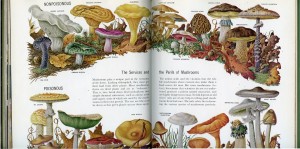 Mycology is the term most often used to describe the field of biology related to fungi or the fungi found in an area, therefore a mycologist is a biologist who mainly studies fungi and the properties thereof. Not only are many mushrooms edible, but many of them are very medicinal as well. When beginning to learn, it’s better to study the ones that are easier to identify that have no poisonous look alikes. Mushrooms not only open up a whole new menu to your food palate, but it’s very possible that when foraging for food one day, other plants might be scarce and mushrooms plentiful, so why not learn them and expand your foraging potential? Next week, Part II, of To Shroom Or Not to Shroom.
Mycology is the term most often used to describe the field of biology related to fungi or the fungi found in an area, therefore a mycologist is a biologist who mainly studies fungi and the properties thereof. Not only are many mushrooms edible, but many of them are very medicinal as well. When beginning to learn, it’s better to study the ones that are easier to identify that have no poisonous look alikes. Mushrooms not only open up a whole new menu to your food palate, but it’s very possible that when foraging for food one day, other plants might be scarce and mushrooms plentiful, so why not learn them and expand your foraging potential? Next week, Part II, of To Shroom Or Not to Shroom.
A little over a month from now will be the Florida EarthSkills gathering. This year it will be held at Little Orange Creek Nature Park, which is a little over a mile east of Hawthorne, Florida. I will be giving plant walks there and as this is a new location it should an interesting place to explore. Dates are the 6th through the 9th of February. EarthSkills conferences differ greatly from herbal conferences. While one can find herbalism at an EarthSkills gathering it is what the name implies, earth skills. You can learn a variety of skills and techniques from identifying edible weeds to making a bow to dying your own handmade clothes. It’s a very communal gathering that reminds me of many such free-spirited events back in the 60s. Cool! See you there.
This is a reminder the Florida Herbal Conference 2014 will be held in Deland in late February into March. Also for the third year in a row I will be leading weed walks at the conference, a challenge in winter on dry ground. My walks are usually first thing in the morning when the air is cool and the coffee hot. Although it is the Florida Herbal Conference it draws teachers and students from all over North America. Two other Florida “locals” will be teaching classes besides the scheduled main speakers. They are Andy Firk who holds a wide variety of workshops throughout the year at his “Bamboo Cove” in Arcadia, and Mycol Stevens of Gainesville, who for the last three years provided the meeting place for the Florida Earthskills gatherings mentioned above.
Green Deane’s Upcoming Foraging Classes:
Saturday, January 18th, Mead Garden: 1500 S. Denning Dr., Winter Park, FL 32789, 9 a.m.
Sunday, January 19th, Florida State College, south campus, 11901 Beach Blvd., Jacksonville, FL, 32246, 9 a.m..
Saturday, January 25th, Boulware Springs Park, 3420 SE 15th St. Gainesville, FL 32641, 9 a.m.
Sunday, January 26th, Jervey Gantt Recreation Complex, 2390 SE 36th Ave., Ocala, FL, 34471, 9 a.m.
Though your foraging may drop off during the winter it’s a great time to study wild edibles with my nine DVD set. Each DVDs has 15 videos for 135 in all. They make a great gift. Order today. Some of these videos are of better quality than my free ones on the Internet. They are the same videos but many people like to have their own copy. I burn and compile the sets myself so if you have any issues I handle them personally. There are no middle foragers. And I’m working on adding a tenth DVD. To learn more about the DVDs or to order them click here.

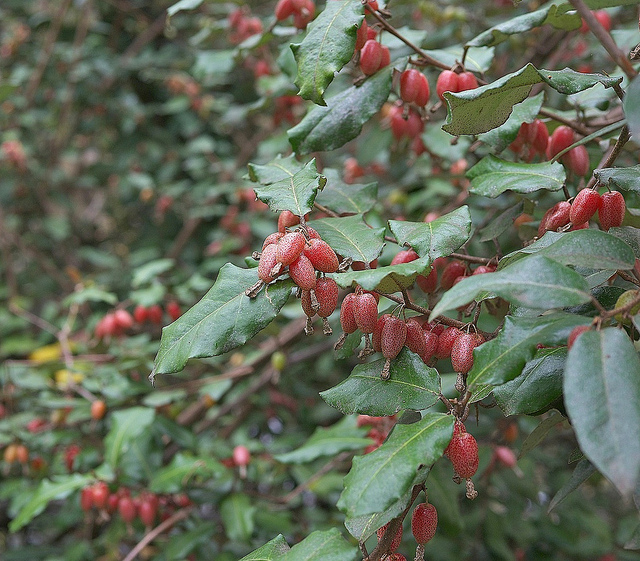
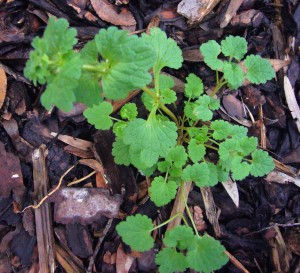
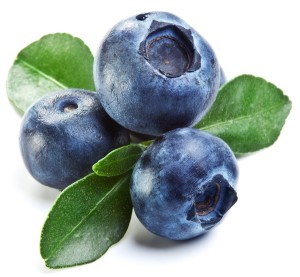

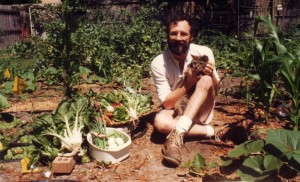
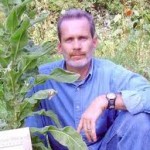
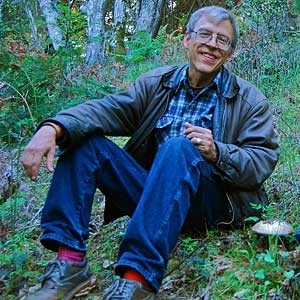


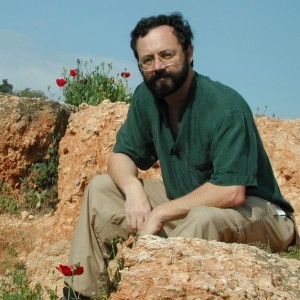

Deane, are you familiar with Yellow Dock? Could you expound on that plant, please. I live in the Shenandoah Valley of Virginia and don’t recall ever hearing about this plant before.
Your teachings have helped me so much! I am a Jax, Fl. native and enjoy seeing all the plants I grew up with, and places that were familiar. Orange Park used to be the best place to ride horses….lots of woods and hidden swamps to explore. Thanks for sharing all your knowledge and love of foraging. Julie
I have an article about Rumexes. https://www.eattheweeds.com/rumex-ruminations/
My daughter lives in West Boca Raton, west of the turnpike. there are many undeveloped areas around there and I finally may have time to do some walking around to see what’s growing. your site is great for getting me familiar with FL “weeds”. I live in north Ohio, 15 miles south of the lake. I harvest medicinal herbs/weeds and also love to forage. I have not seen any plantain in FL yet or do I just not recognize it?
please help me out with this
thank you
Have you read my article on plantagos? https://www.eattheweeds.com/white-mans-little-foot-dwarf-plantain-2/
To apply Botany Builder # 34, I may describe some types of grapes and apples as pruinose ; but I’m not sure if I say the same about some mangos and tomatos. Let me confirm that I’m one of your “collection- your harvest – of like-minded souls wanting to learn” as the honourable guest writer ,Dewayne Allday has remarked. Thanks both of you.
come join us on the forum farouk…